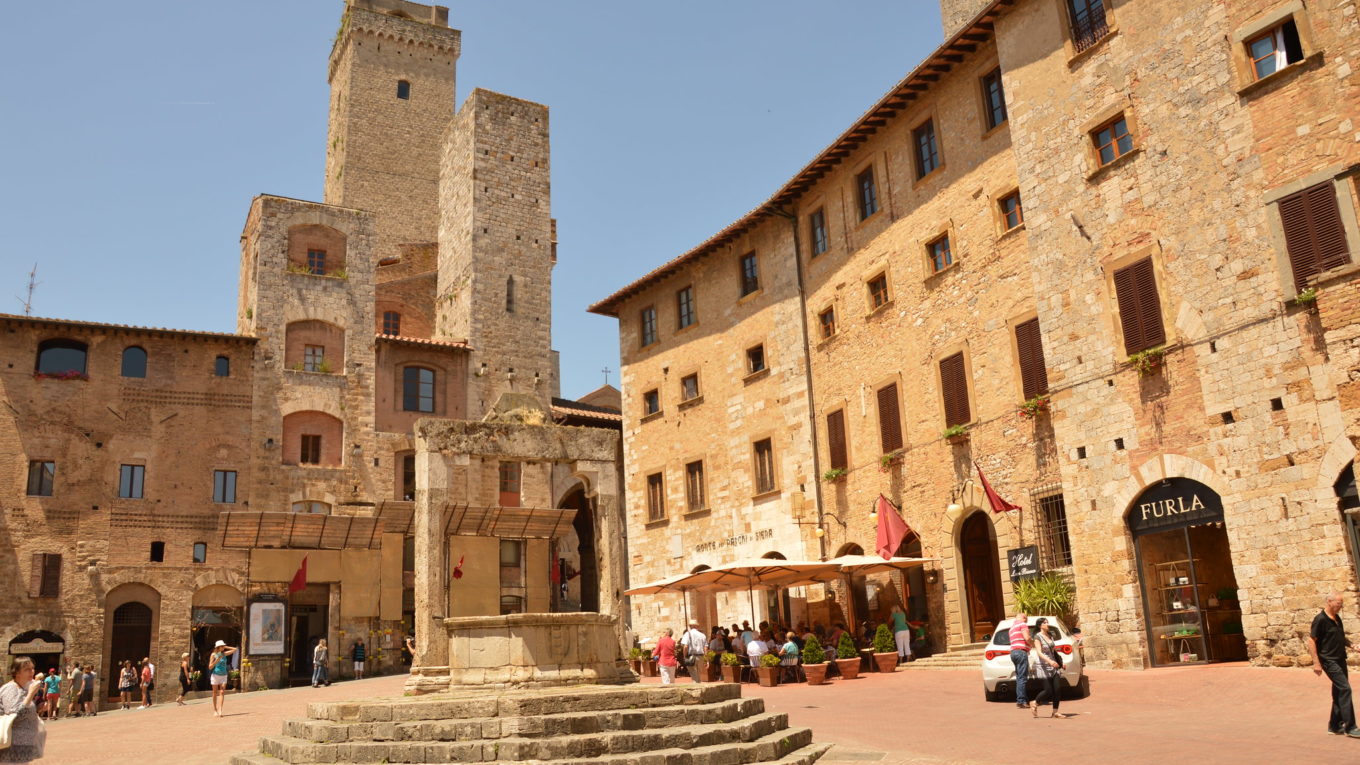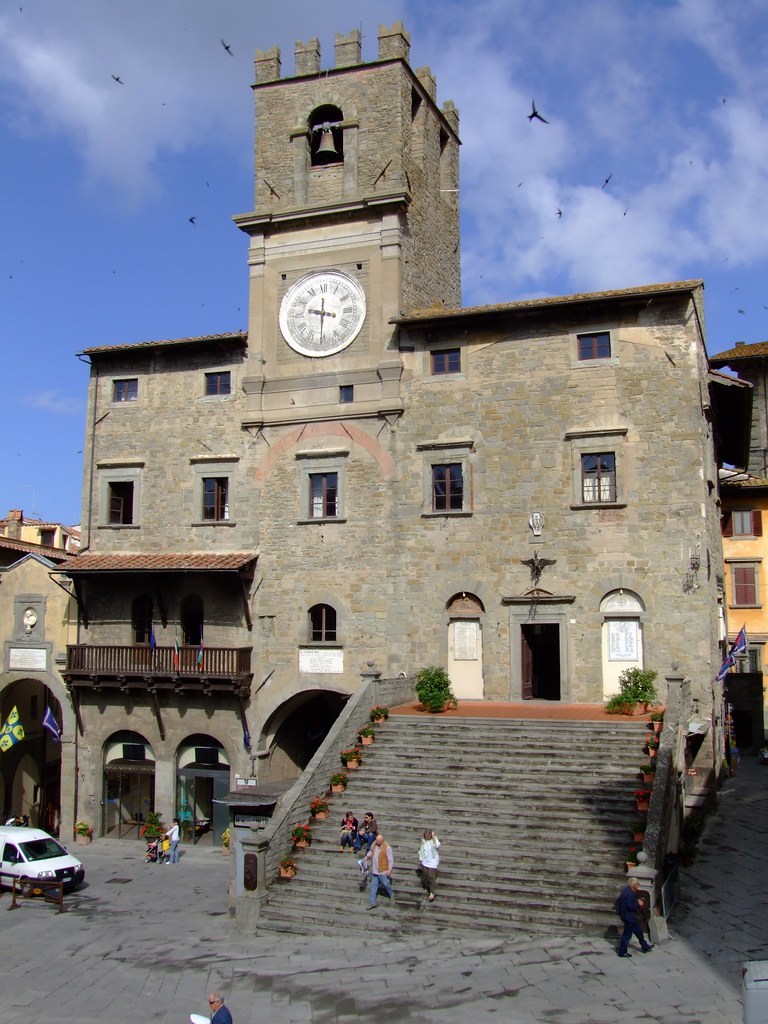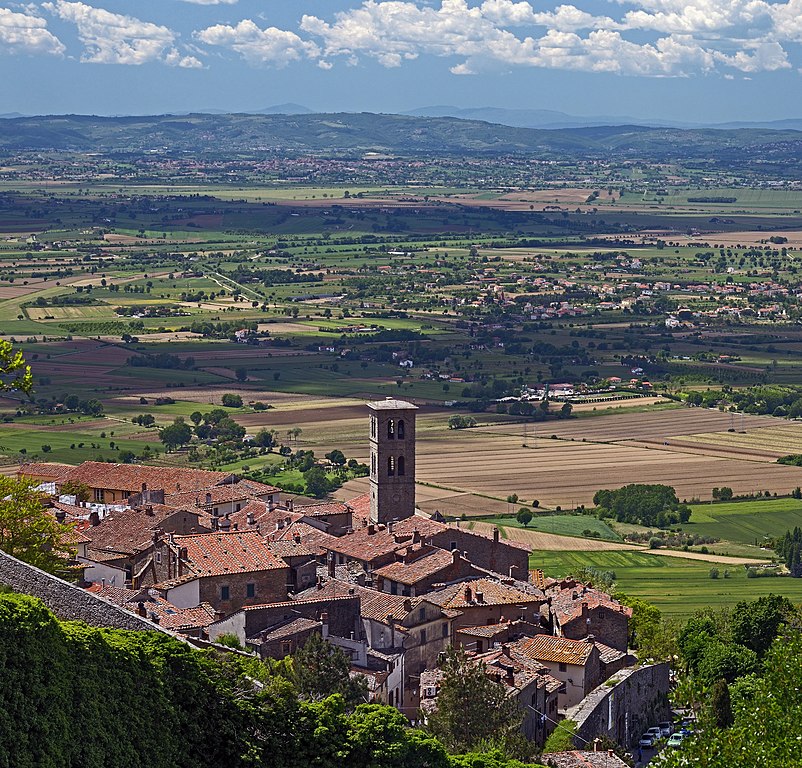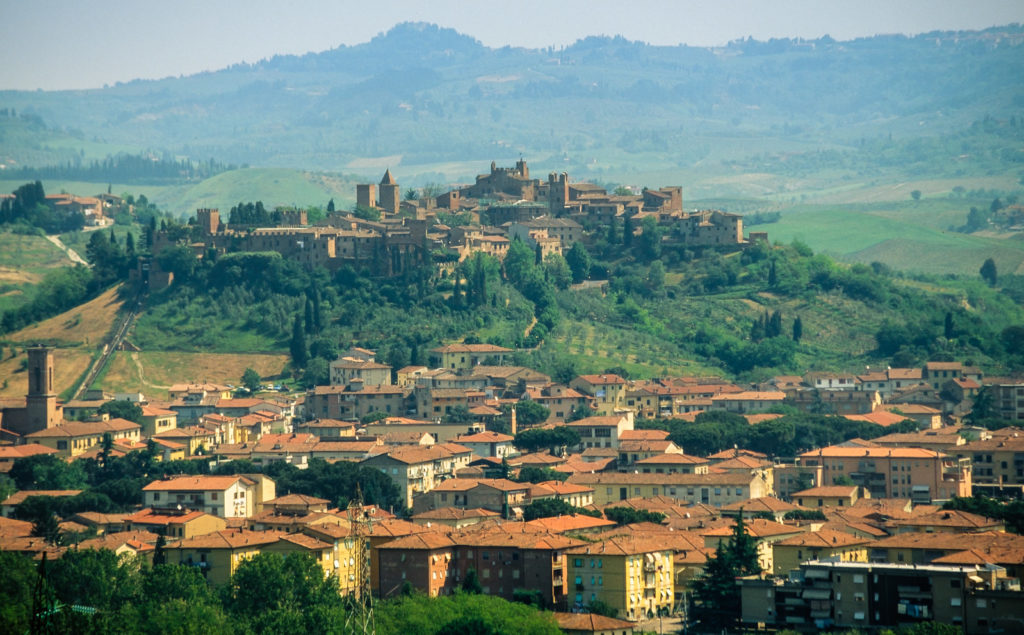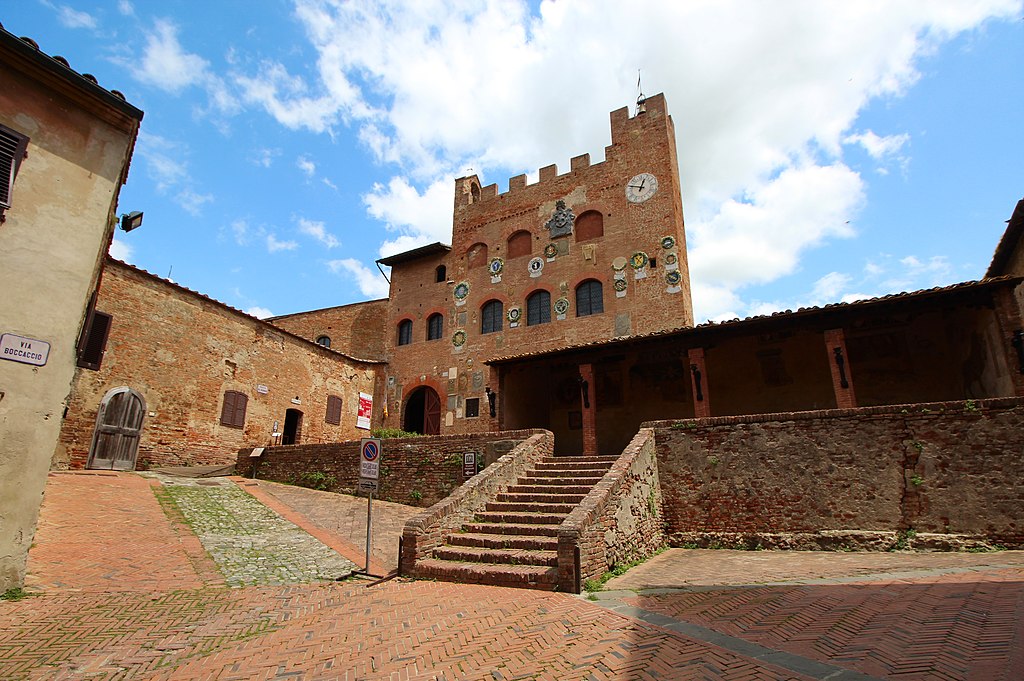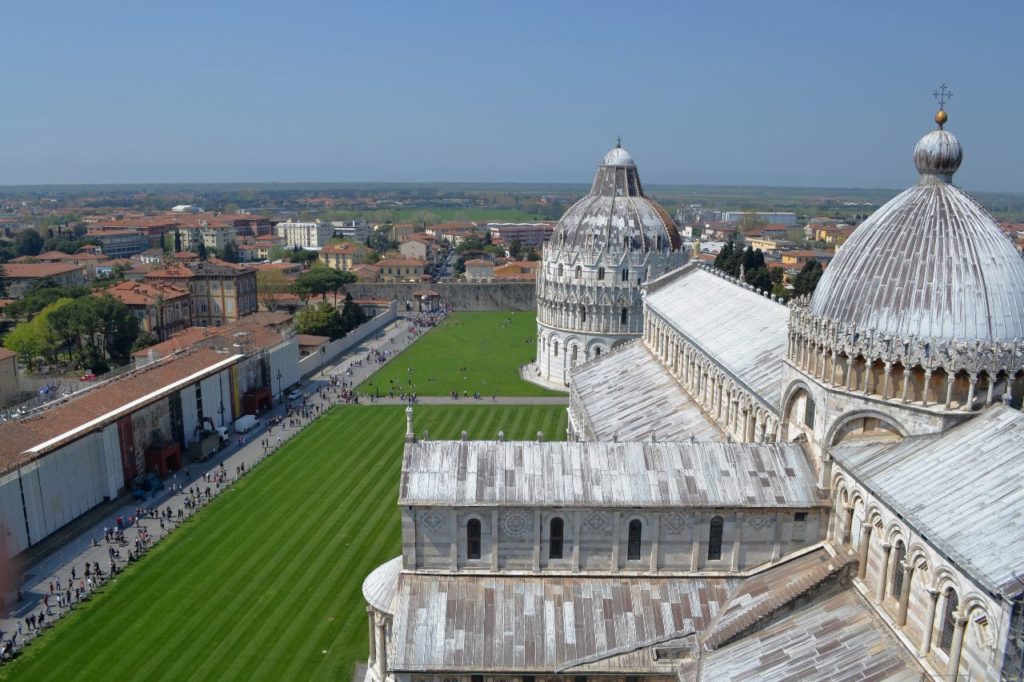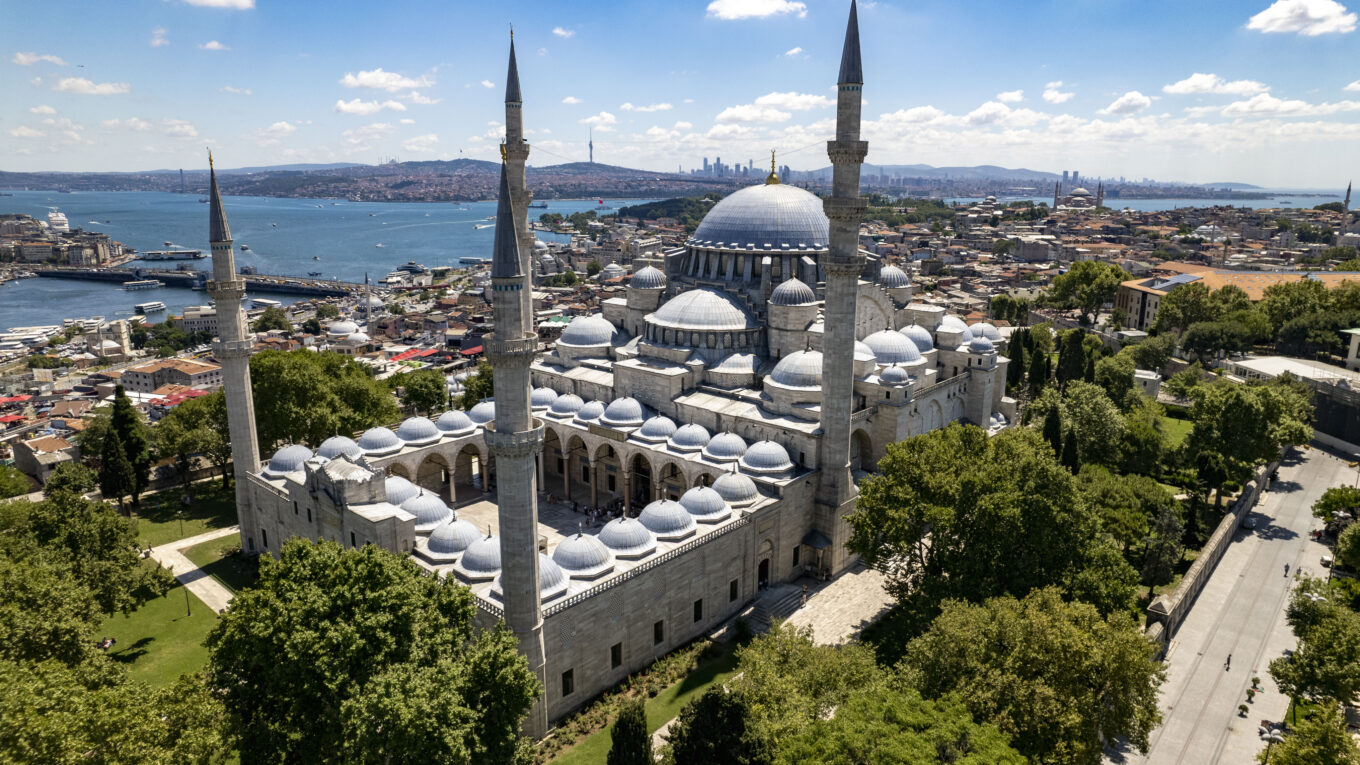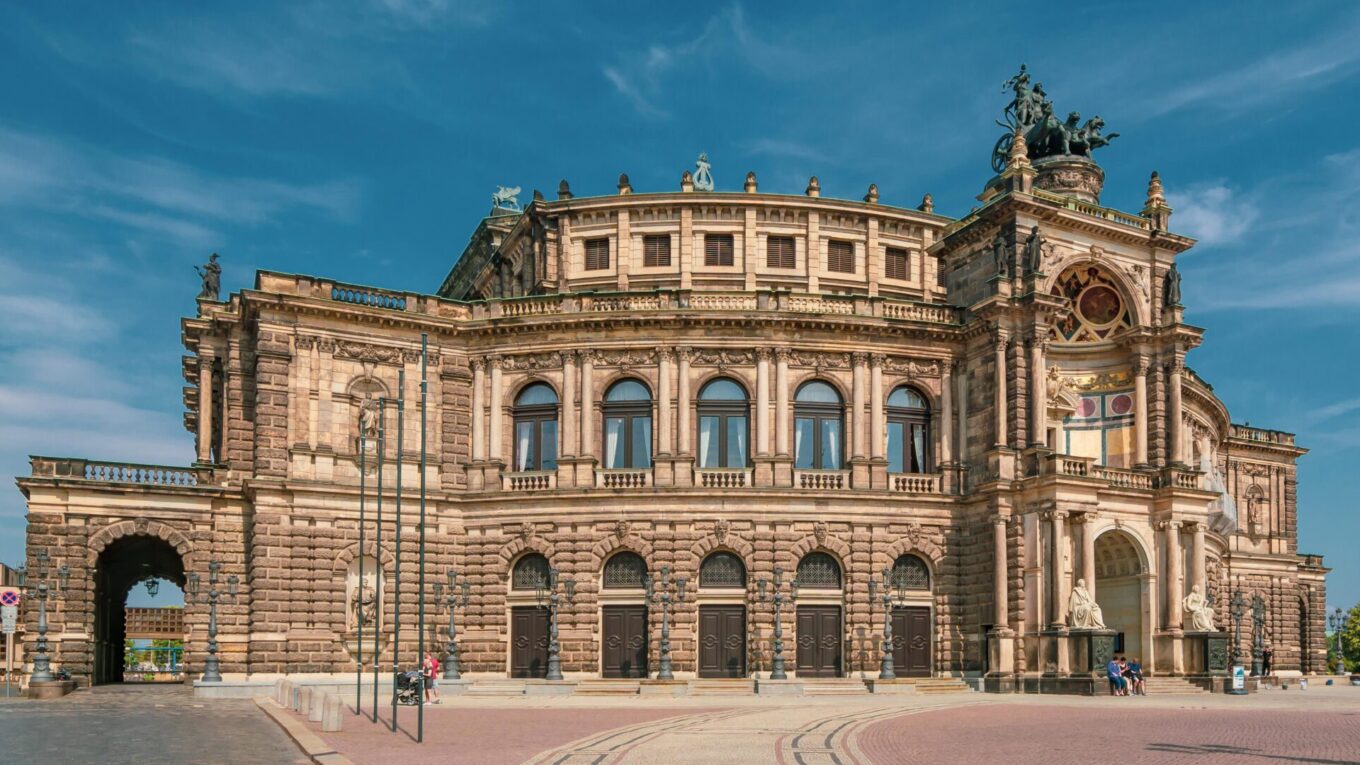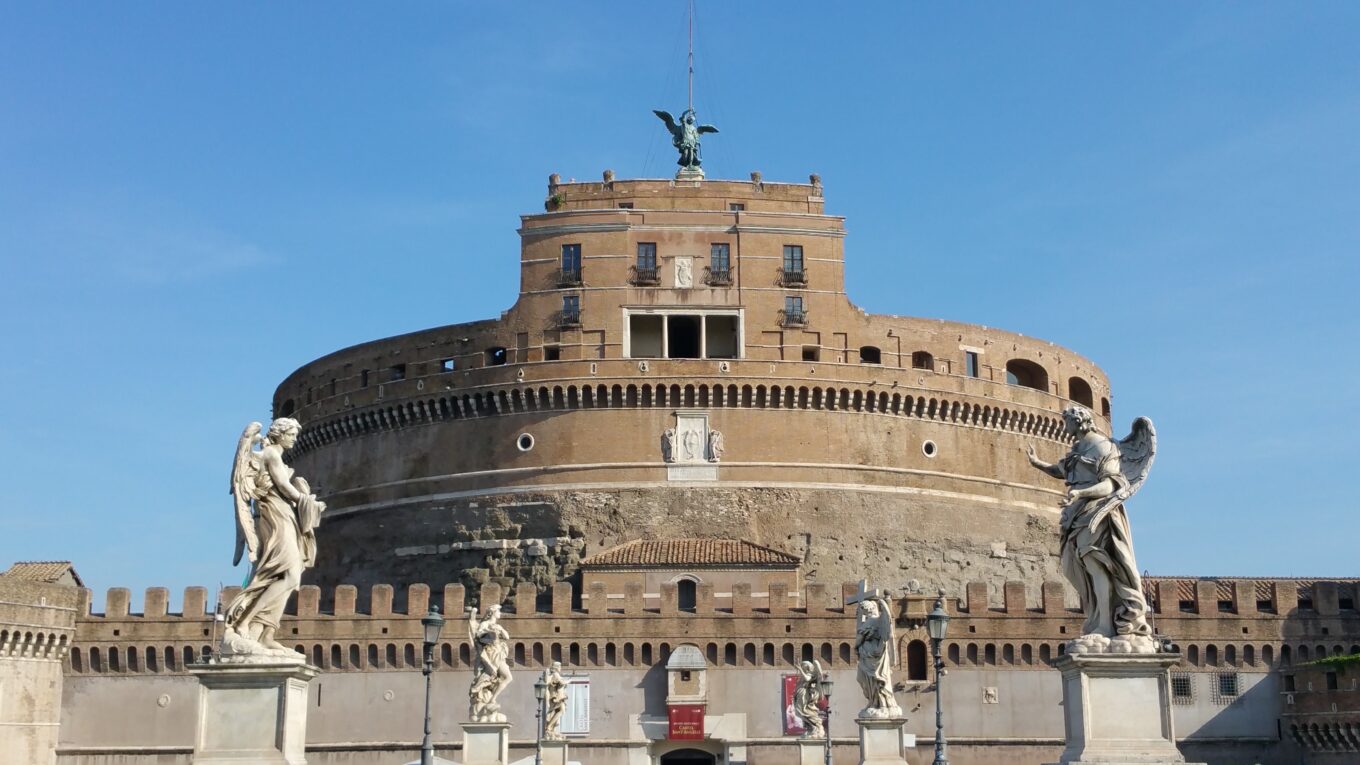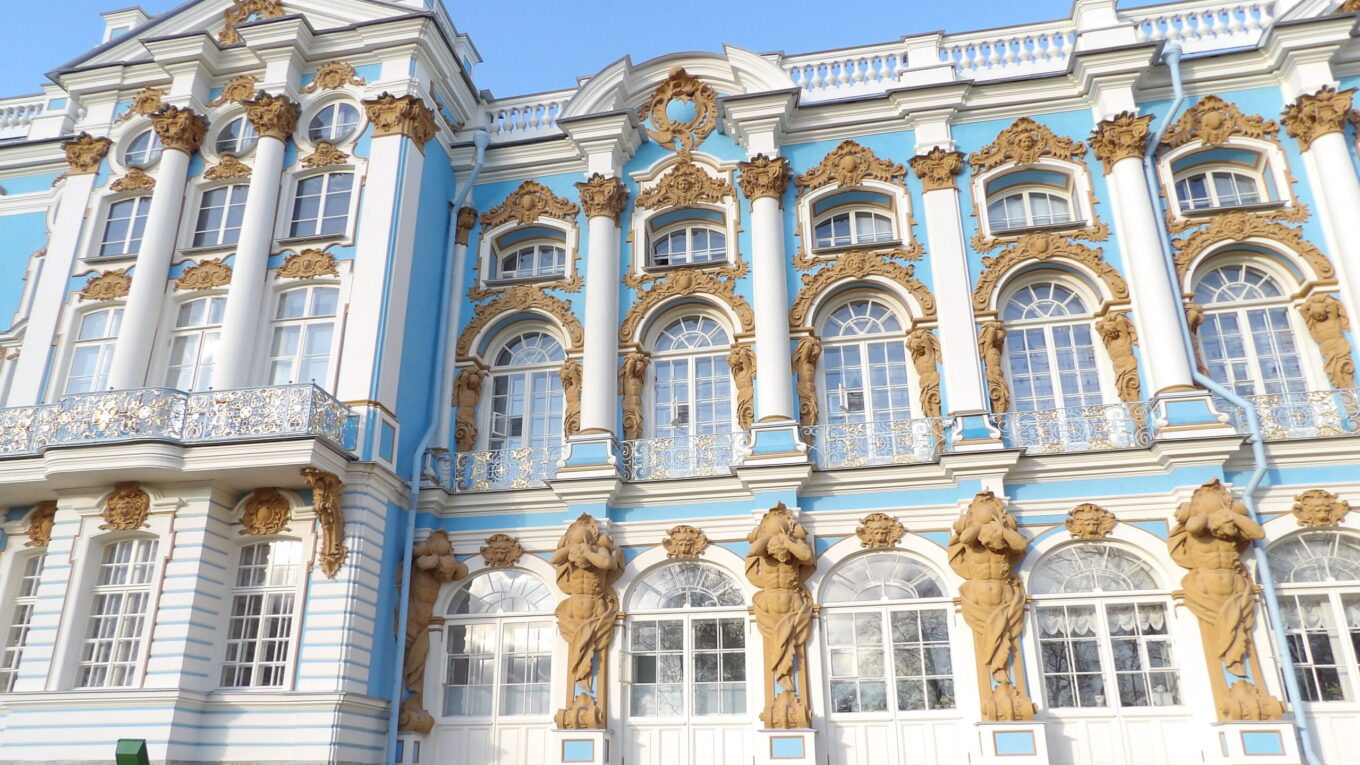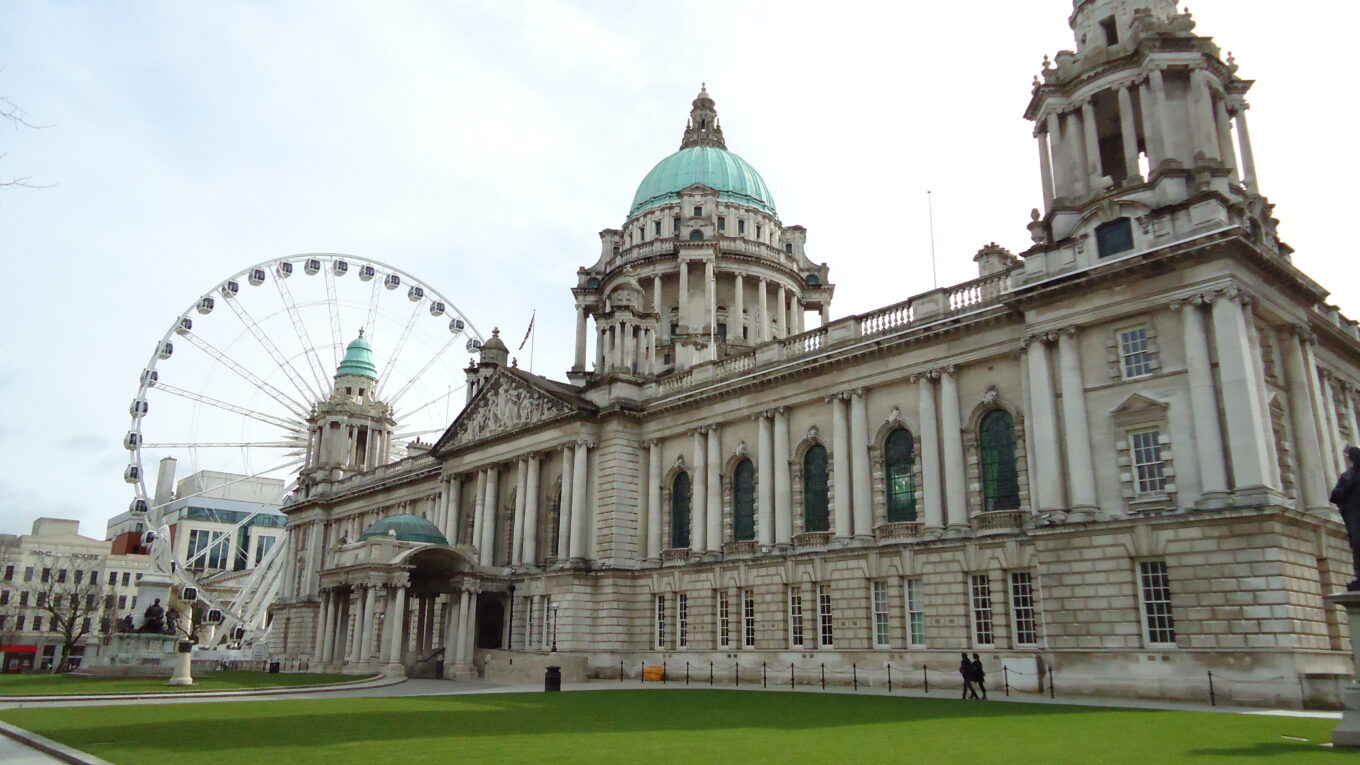Top 10 Tuscan Hill Towns
Tuscany is one of the most beautiful regions in all of Italy. It’s known for rolling hills, picturesque villas, and quaint medieval towns. The countryside is filled with dozens of Tuscan Hill Towns, which are fortified villages, perched atop steep slopes. Many of these towns have been occupied since ancient times, and they prospered throughout the medieval period. This list will count down some of the greatest examples of Tuscan Hill Towns, and show why so many people regard Tuscany as Italy’s most beautiful region.
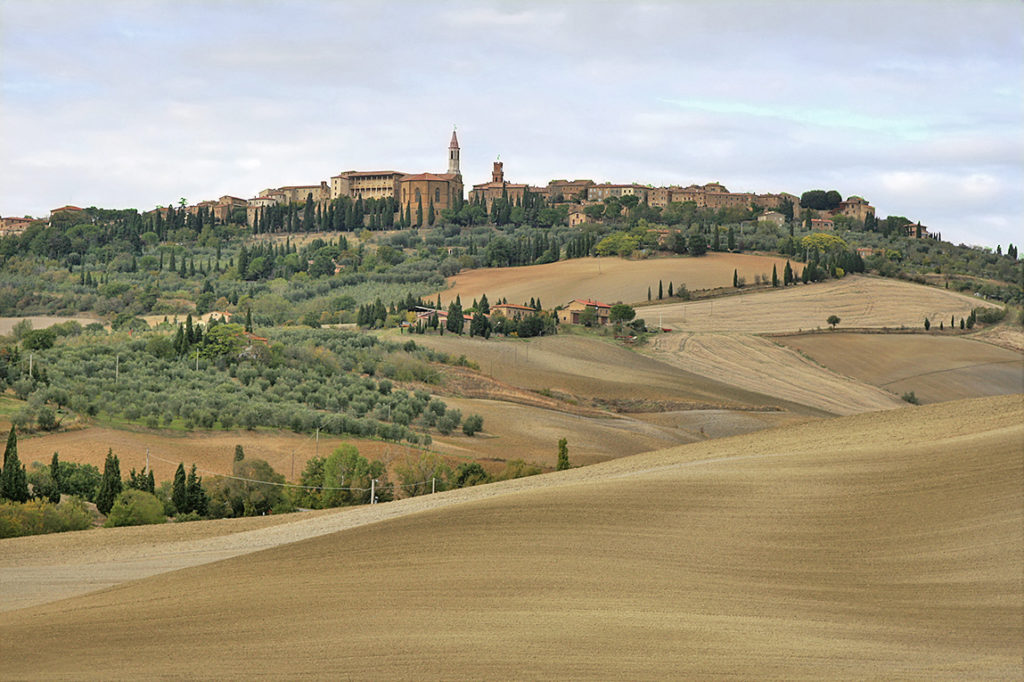
Photo by stevehdc from Wikimedia Commons
Where is Tuscany?
Tuscany is a region in central Italy. It’s bound by the Mediterranean Sea to the West, and it’s surrounded by five other Italian regions: Liguria, Emilia-Romagna, Umbria, La Marche, and Lazio.
What are the top 10 Tuscan Hill Towns?
1. San Gimignano

San Gimignano is famous for the medieval fortified towers that can be seen across the town’s skyline. There are 7 major towers in the city and they create one of the tallest skylines of the Medieval Period. The towers themselves were all part of the medieval fortification system for the town, in addition to a series of walls that were built in the 13th century. The towers were designed as homes, where the owners could seek refuge during an attack. Each tower is a series of rooms, with the living quarters on the upper levels. Originally there were no internal staircases and you needed a ladder to access the upper floors.

Some towers were built with incredibly small doorways at the upper levels. These were designed so that a man wearing medieval armor couldn’t quite fit through the doorway which was an extra line of defense. San Gimignano was a prospering city until the arrival of the Black Death in the 1300s. The infectious disease killed a huge portion of the city’s population, and a long period of decline followed. Over the next 700 years, the city center in San Gimignano remained remarkably well preserved, and it’s filled with countless medieval buildings which give the town its distinct charm. In 1990 the entire historic center of San Gimignano was declared a UNESCO World Heritage Site.
2. Pitigliano
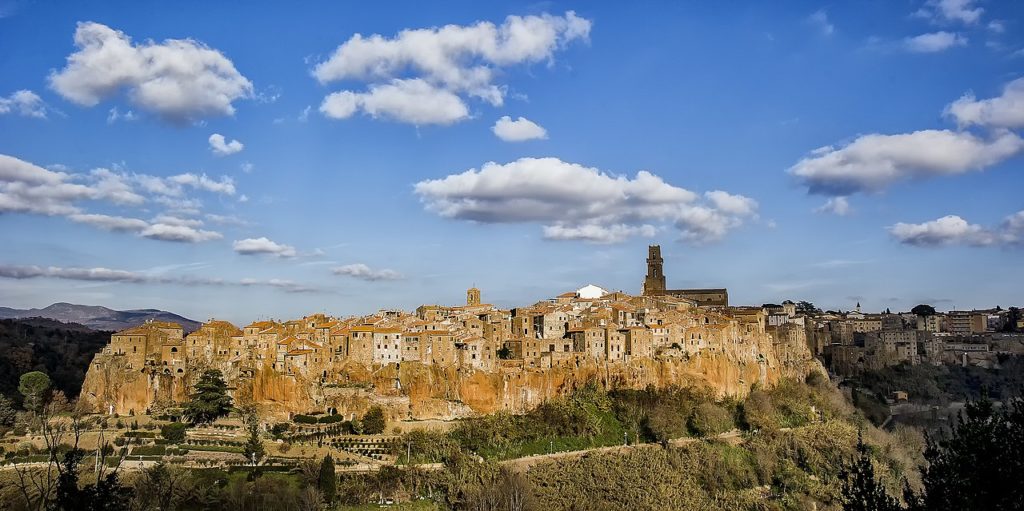
Pitigliano is an ancient city perched along a steep cliff edge. It struggled for independence in the middle ages and it entered into various conflicts with its neighbors such as Siena. Eventually, Pitigliano came within the territories of the Grand Duchy of Tuscany which was controlled by the Medici family in Florence. The city is precariously built over a rocky outcrop. In the image above you can see how space was limited, and people built their homes tightly packed all the way to the edge of the surrounding cliffs. This precarious positioning makes it one of the most striking Hill Towns in all of Tuscany.
3. Volterra
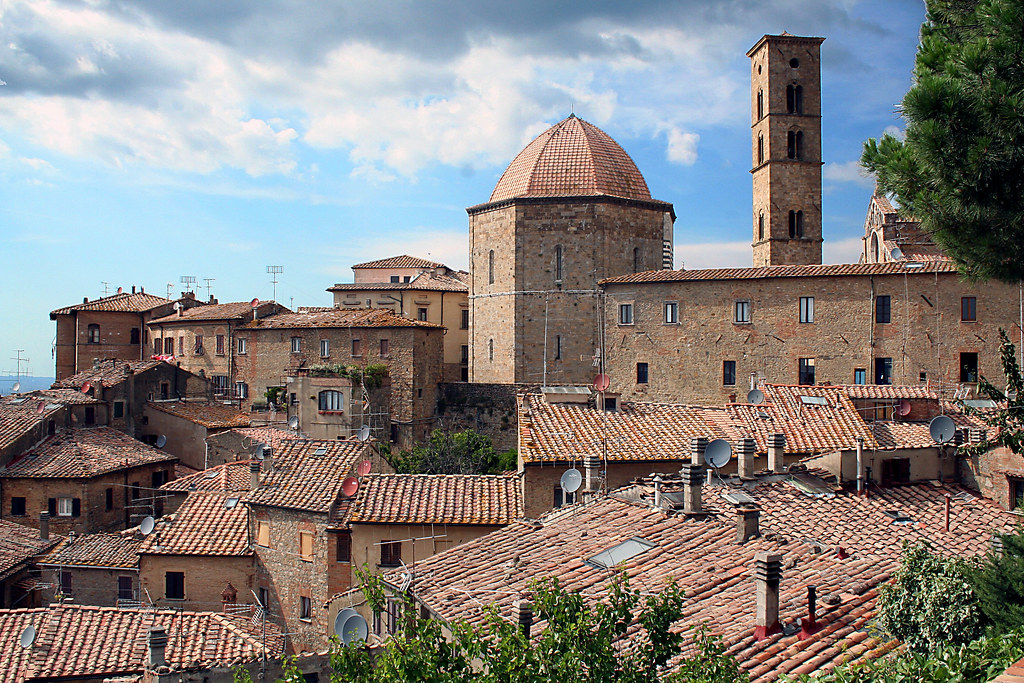
Volterra is another Hill Town in Tuscany that has roots all the way back to ancient times. It was originally settled by the Etruscans. The Etruscan civilization originated in the Iron Age and had its cultural and territorial peak around the year 750 BCE. The territory of the Etruscans was eventually absorbed into the rapidly expanding Republic of Rome, which would eventually go on to rule all of Italy and the Mediterranean. The Romans also left their mark on Volterra, leaving behind one of the greatest surviving examples of an Ancient Roman Theater.
4. Siena
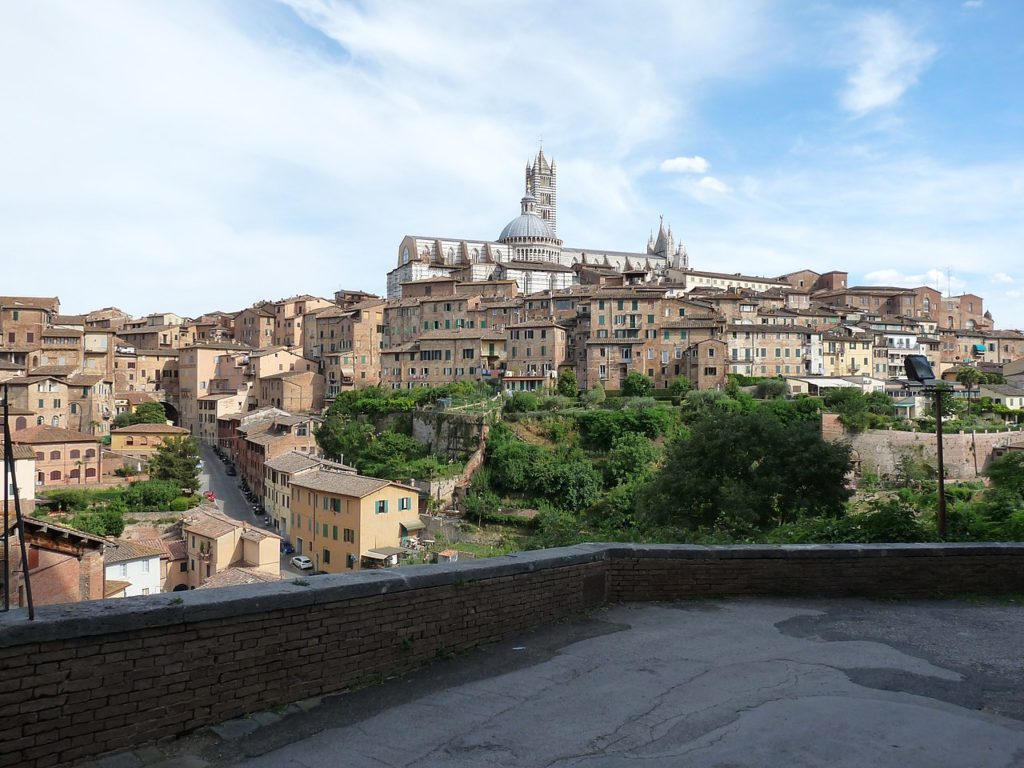
Siena grew rapidly in the middle ages when it was the capital of the Republic of Siena. Eventually, the city footprint spread outward from the original hilltop where it began. The Republic of Siena constructed several incredible works of architecture within the city. Some of the greatest are the Duomo di Siena and the Palazzo Publico. Siena also includes the Piazza del Campo, a remarkable public square dating to the middle ages. [Its currently ranked as #8 on our list of the Top Piazzas in Italy] Siena’s greatest rival was nearby Florence, which went on to take control and incorporate Siena into the Grand Duchy of Tuscany. Just like several other towns and cities within the region, Siena is currently listed as a UNESCO World Heritage Site.
5. Pienza

Pienza is another picturesque Fortified Hill Town located within Tuscany. Pienza is not far from Siena, and it’s one of the larger towns within the Province of Siena. In the image above you can clearly see the well-preserved Fortified Walls that encircle the historic center of the town. These walls are typical of the era, when nearly all of the larger cities within Europe had a fortification system. In addition to the walls and towers, Pienza is located atop a steep hill which helped with defense. The strategic positioning of the town is today just used by people to gaze out over the surrounding Tuscan countryside.
6. Montepulciano

Montepulciano is located just 66 miles (106 km) southeast of Florence, the capital and largest city in Tuscany. It remained a close ally of Florence and its Medici Rulers, and in return, Montepulciano saw a long period of prosperity during the Florentine Golden Age. This of course was the time of the Italian Renaissance, when Renaissance Architecture was the dominant building form throughout the Italy. Montepulciano is another one of the great Hill Towns of Tuscany, and the abundance of Renaissance buildings is part of what makes the town so incredible.
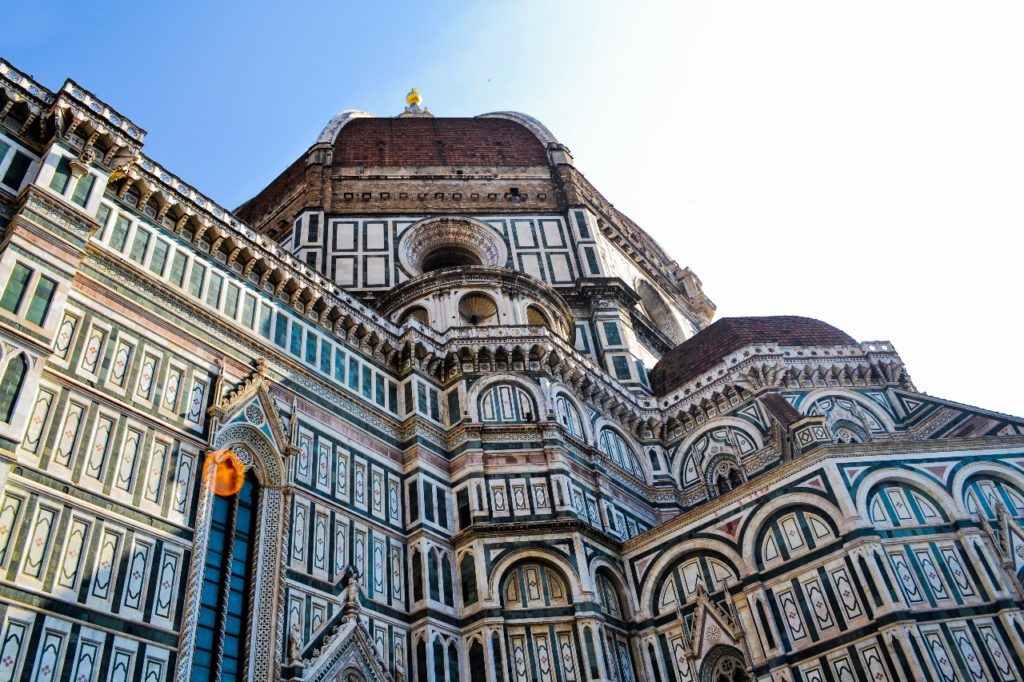
Interested in Renaissance Architecture? Check out our article on the Architecture of Florence to learn more about the birth of the Renaissance Movement.
7. Arezzo
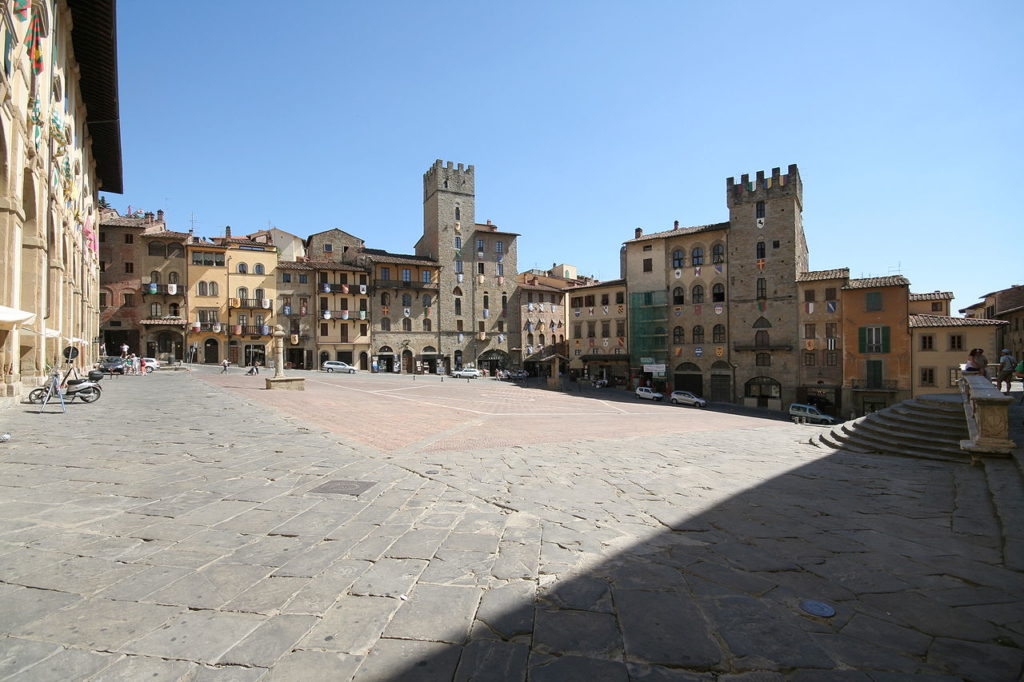
Like Montepulciano, Arezzo is located to the southeast of Florence, and the city had ties with the Republic of Florence throughout history. Arezzo is one of the larger towns on this list, with a population hovering around 100,000 residents. Although Arezzo doesn’t exactly fit the mold of a Tuscan Hill Town, the city still makes use of the landscape to improve its defenses. While much of the city is flat, the highest point is home to the Fortezza Medicea. Translating to Medici Fort in English, it was built by the powerful Medici Family. It’s one of several 16th-century Star Forts, designed to boost the defenses of the entire Grand Duchy of Tuscany. This defensive line included other forts in cities like Volterra and Siena.
8. Cortona
(right) Photo by Ввласенко from Wikimedia Commons
Located about 17 miles (27 km) south of Arezzo, the city of Cortona is another Tuscan Hill Town perched high over its surroundings. In the right image above you can see the quintessential view of the Tuscan countryside beneath the medieval core of Cortona. One of the most important works of architecture in the town is the Palazzo Comunale – which is in the left image above. The palazzo is within one of the main squares and it contains a prominent bell tower. Cortona is almost completely enclosed by a system of defensive walls, and at the very top of the hill overlooking the town is the Fortress of Girifalcom, which is a Medieval Castle with foundations dating back to the days of the Etruscans.
9. Montalcino

Montalcino is another town in the Province of Siena that’s built atop a large hill. Because of its location virtually every street and building has exquisite views of the surrounding area. Today Montalcino is a quiet town, home to only a handful of shops and restaurants. It’s outfitted with a set of defensive walls and a large medieval fortress dating to the 14th century. The main attractions are the Fortress of Montalcino and the Cathedral of the Holy Savior, which is a medieval church that was updated with a few Renaissance Style modifications.
10. Certaldo
(right) Photo by LigaDue from Wikimedia Commons
Certaldo is a small commune located in the area surrounding Florence. Like many other Tucan Hill Towns, it was a settlement dating back to Etruscan times, and it later was expanded by the Romans. The actual hilltop portion of Certaldo is the oldest part of the town, and it’s where you’ll find the majority of its historic architecture. However, this historic portion is only about 800 feet (250 m) long, and you can walk across it in under three minutes. The majority of the actual town of Certaldo is built below the original fortified hill town, and it contains more modern buildings. Most of the population lives in the lower portion, and both levels are connected by a funicular.
What are some other cities in Tuscany?
There are also some larger cities throughout the region of Tuscany that weren’t built in fortified hilltop positions. Cities like Florence and Pisa, were built along Tuscany’s largest waterway, the Arno River. The Serchio River, located in northern Tuscany, is home to the beautiful city of Lucca. And Livorno is the largest city built along Tuscany’s stretch of Mediterranean Coastline. Florence was the birthplace of the Renaissance Movement in Architecture, and it’s one of the most iconic cities in all of Europe. It still serves as the capital of the Region of Tuscany, one of 20 regions making up modern-day Italy.
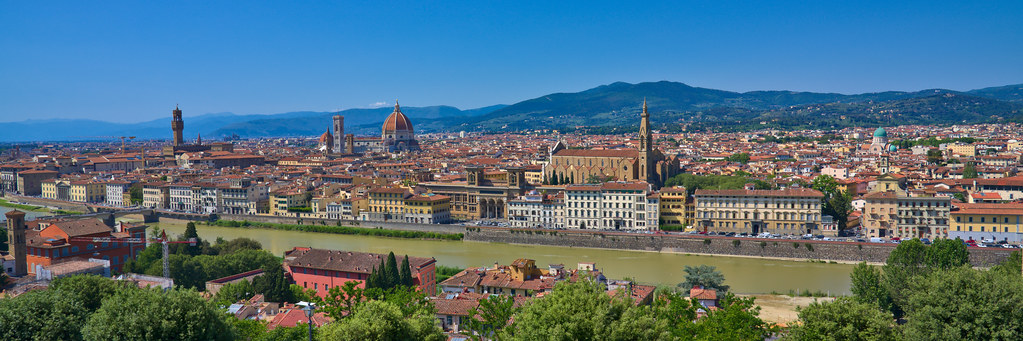
Photo by Peter Stenzel from flickr
Lucca, the city in the left image below, is one of the most impressive of the smaller cities in Tuscany. It is completely enclosed by a preserved set of earthen-packed walls that were built after the age of gunpowder. These walls, paired with the Gothic Style Lucca Cathedral, and several fortified towers, are some of Lucca’s most impressive works of architecture.
Pisa ranks as the second-most visited city in all of Tuscany after Florence and its of course home to the infamous Leaning Tower of Pisa. The image below is a view of the entire Duomo di Pisa Complex, including the cathedral itself, and the detached baptistery. The Cathedral of Pisa is ranked #1 on our list of examples of Romanesque Architecture, and it still remains one of the most iconic churches in Italy.
(right) Image of of the Pisa Cathedral from the Leaning Tower of Pisa
Tuscan Hill Towns: In Review
Many people visit Tuscany and only see its major cities like Pisa and Florence. But beyond the big cities, you will find an abundance of quaint, beautiful hill towns that have remained relatively untouched since the middle ages. The hill towns of Tuscany are unique to the region and are some of the most picturesque places in all of Italy. They contain a variety of different forms of architecture from throughout history, and they are a huge part of why Tuscany is one of Europe’s most visited regions.

- About the Author
- Rob Carney, the founder and lead writer for Architecture of Cities has been studying the history of architecture for over 15 years.
- He is an avid traveler and photographer, and he is passionate about buildings and building history.
- Rob has a B.S. and a Master’s degree in Architecture and has worked as an architect and engineer in the Boston area for 10 years.
Like Architecture of Cities? Sign up for our mailing list to get updates on our latest articles and other information related to Architectural History.

